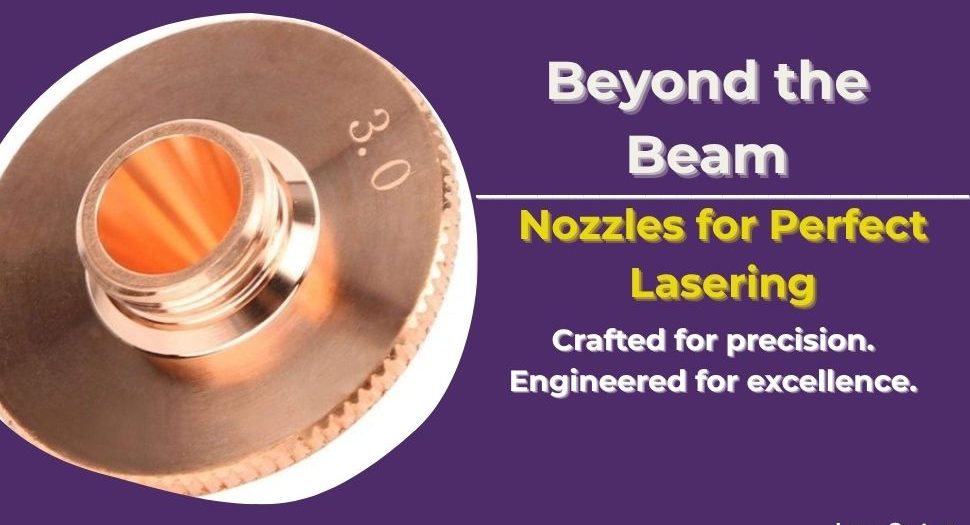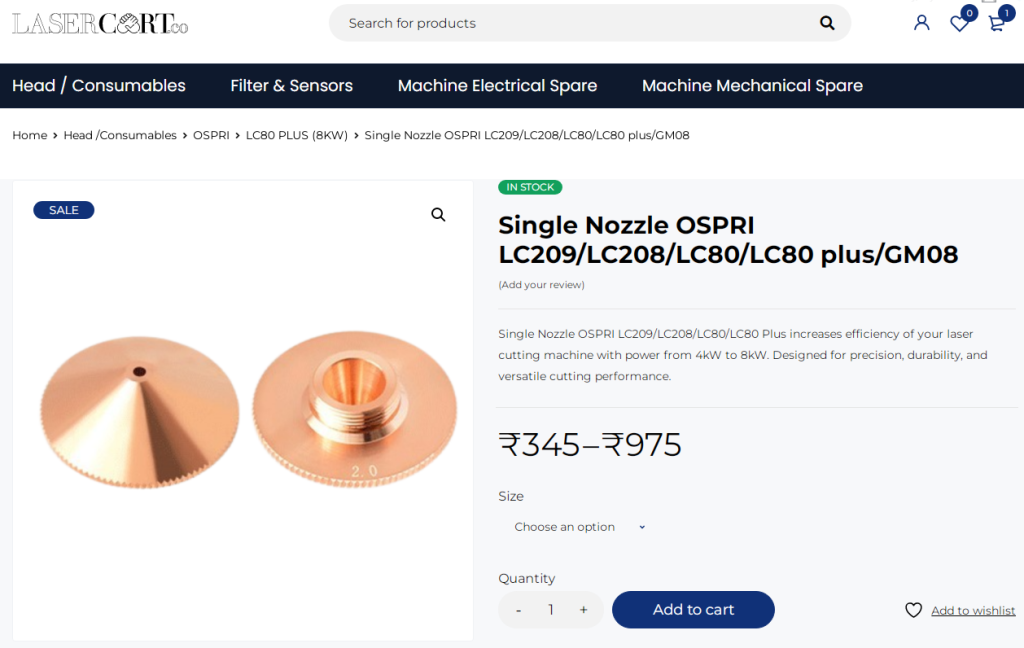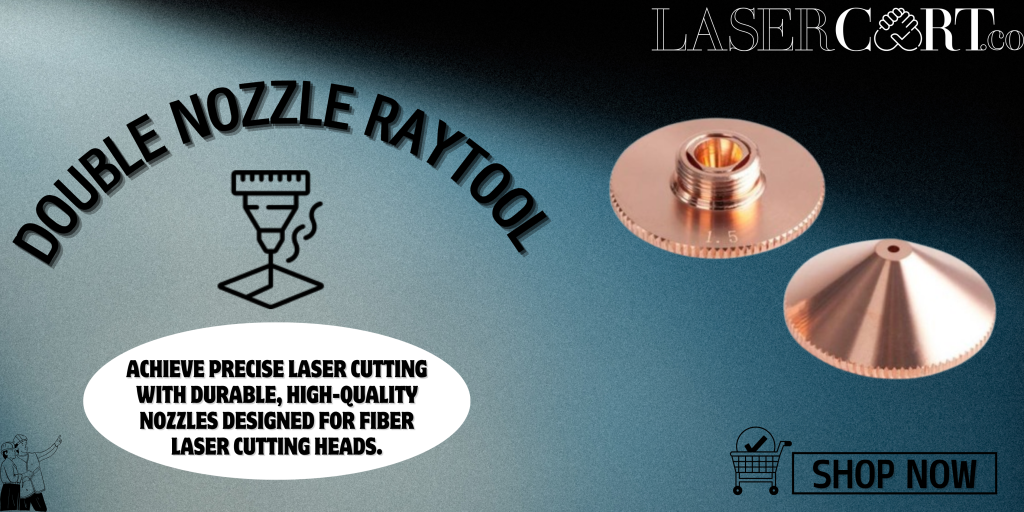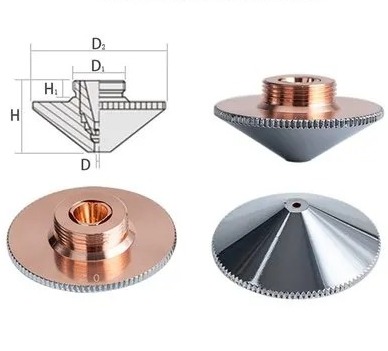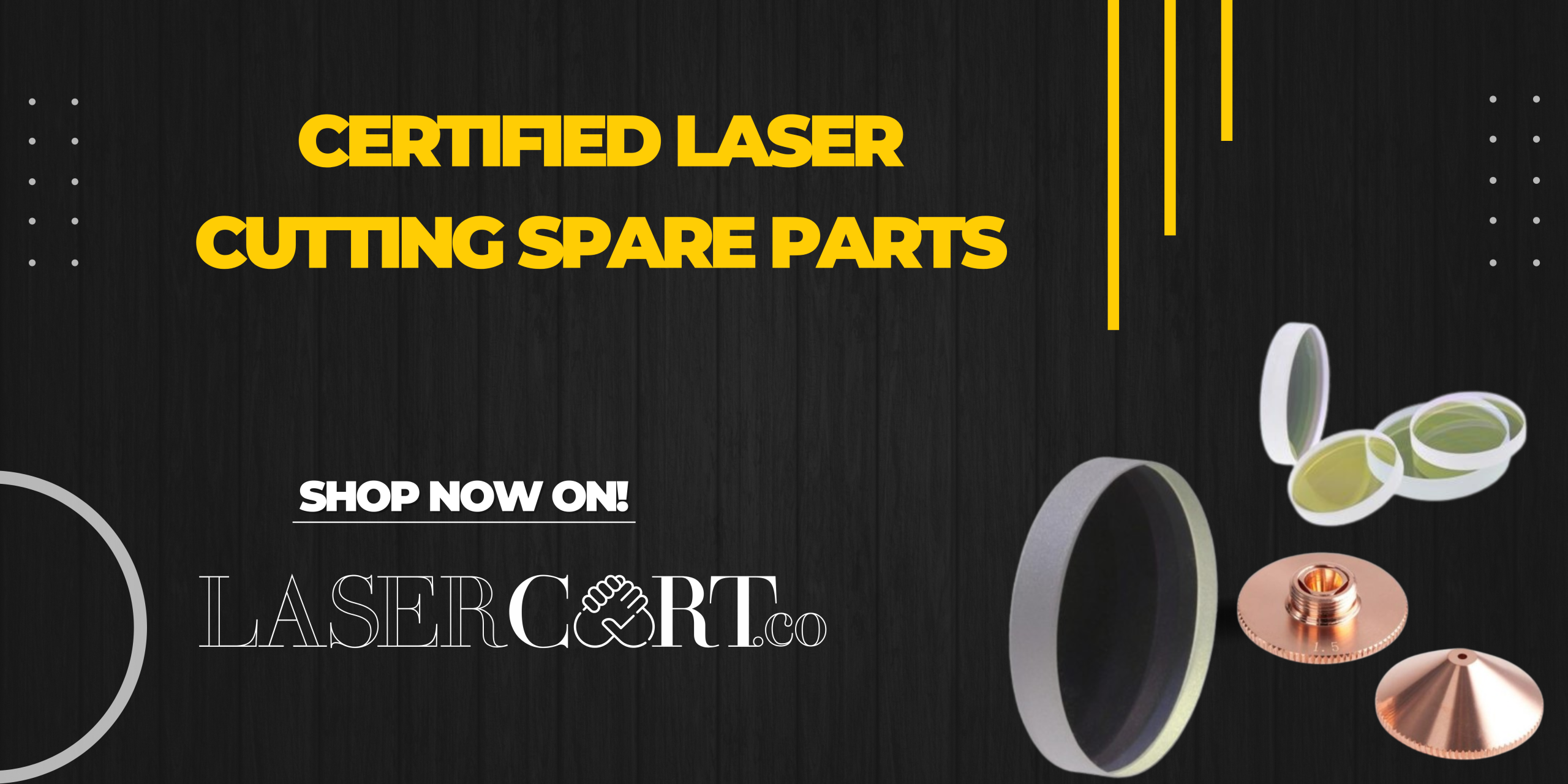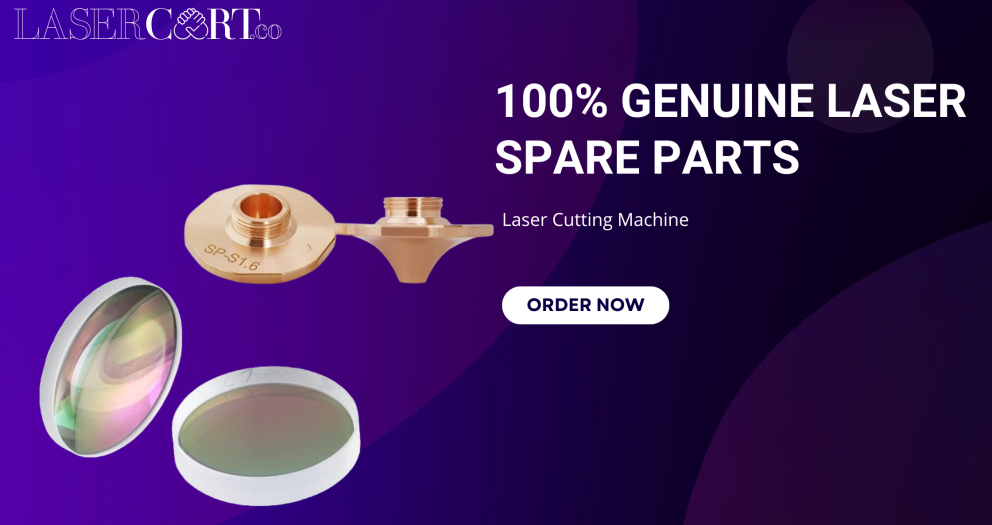Maximize Laser Uptime: Your Top 5 Critical Spare Parts Checklist
As a business owner, your laser cutting or engraving machine isn't just equipment; it's the heart of your production. In the fast-paced manufacturing world of today, particularly in India's booming industrial sector, any downtime means lost revenue, missed deadlines, and dissatisfied clients. That's why being proactive about machine maintenance, especially having the right spare parts readily available, isn't merely a good idea – it's a strategic imperative.
My goal today is to share insights from years in the industry, guiding you through the critical components most prone to wear and tear in your fibre laser and CO2 laser cutting and engraving machines. We'll explore what these parts do, why they're essential, and crucially, how smart online sourcing can transform your approach to machine upkeep. Consider this your practical roadmap to uninterrupted productivity and superior laser performance.
Understanding Laser Machine Spare Parts: Your Machine's Lifeline
Before we jump into the "must-haves," let's clarify what we mean by laser machine spare parts. These are the consumable items and components that naturally wear out or degrade over time due to the intense demands of precision laser cutting and industrial laser marking. Think of them as the vital organs that keep your machine healthy and efficient.
When you overlook these crucial details, it’s like a small crack in a dam – the problems can quickly multiply, leading to bigger headaches down the line:
- Compromised Quality: Worn parts directly impact the cutting quality and finish of your laser work, leading to issues like burrs, inconsistent cuts, or fuzzy engravings. Poor quality output, of course, hits your product’s appeal and, in turn, customer happiness.
- Reduced Efficiency: A machine struggling with faulty components will operate slower, consume more power, and use more assist gas, driving up your operational costs unnecessarily.
- Increased Downtime: This is the most impactful. Waiting for a crucial part to arrive after a breakdown can mean days, or even weeks, of lost production. Every minute your machine is idle is a missed opportunity to generate revenue and fulfil orders.
- Higher Repair Costs: A minor issue left unaddressed can quickly escalate into a major repair, often involving more expensive parts and specialized technician time.
By investing in essential laser machine spare parts proactively, you're not just buying components; you're investing in uptime, quality, safety, and ultimately, the profitability and long-term reliability of your business.
Your Top 5 Essential Laser Machine Spare Parts
While a modern laser machine has many components, some are far more prone to wear and tear due to their direct involvement in the laser process. Based on our extensive experience and common industry need, here are the top 5 categories of spare parts every laser business owner in India should consider stocking.
Nozzles
- What they are: These are small, precision-machined metal tips through which the laser beam passes and the assist gas is directed. They come in various orifice sizes and types (single-layer, double-layer) for different materials and thicknesses.
- What they do: They shape and focus the assist gas flow (like oxygen or nitrogen) to effectively blow away molten material, cool the cutting area, and protect your expensive lenses from debris and back-splatter. The correct nozzle ensures a clean, efficient cut and optimal laser performance.
- Ideal Time of Replacement: These are highly consumable and should be inspected daily. Replace them immediately if you notice any visible damage, deformation, clogging, or a decrease in cut quality (e.g., increased burrs, rough edges, dross, or inconsistent cutting). Some businesses replace them every shift or daily depending on the material and intensity of use.
Ceramic Rings
- What they are: This often-overlooked component sits just above the nozzle. It provides electrical insulation for the cutting head and, crucially, plays a vital role in the machine's capacitive height sensing system.
- What they do: They transmit the electrical signal for the auto-focus system (capacitive height sensing). This signal tells the machine how far the nozzle is from the material, preventing crashes and ensuring optimal focus. Plus, they’re essential for getting that perfect alignment between the nozzle and the laser beam, directly impacting how good your laser beam quality is.
- Ideal Time of Replacement: While more durable than nozzles, they are still prone to wear. Inspect them weekly. You should replace it if you see any physical damage – think cracks, chips, or burn marks. Also, if your machine starts crashing more often, has issues accurately sensing height, or cuts unpredictably, that’s a clear signal it’s time for a new one. Many users find replacement every few months to a year, depending on usage, is a good preventative measure.
Focus Lens
- What it is: This is a core laser optic of your machine, precisely shaping and concentrating the powerful laser beam. Any imperfection on its surface directly impacts your cutting precision and efficiency. It takes the parallel beam from the collimating lens and converges it into an incredibly small, intense focal spot on the material surface.
- What it does: It concentrates the laser energy to achieve the incredibly high-power density needed to melt or vaporize material, enabling precise cutting and engraving. The accuracy of this focus directly determines the quality and speed of your work.
- Ideal Time of Replacement: Lenses are generally robust but are susceptible to damage from heat, spatter, or improper cleaning. Inspect them weekly. Replace them if you observe: visible scratches, cracks, or burn marks on the lens surface; persistent haziness or cloudiness that cannot be removed with proper cleaning; a noticeable decrease in laser power reaching the workpiece, leading to slower cutting speeds or incomplete cuts; or degradation in cut quality, such as a wider kerf, increased dross, or inability to cut through materials that were previously easy. General guidelines suggest replacement every 3-12 months, depending on usage intensity and material types (e.g., highly reflective materials increase wear).
Protective Windows
- What it is: A thin, transparent glass or quartz disc specifically coated to allow the laser beam to pass through with minimal loss, while protecting the internal optics. It's your primary defines against external elements.
- What it does: It acts as the first line of defines, protecting your valuable collimating and focusing lenses from: Splatter and Debris (molten material, smoke, and fumes generated during cutting) and Back-reflection (laser energy reflecting back from highly reflective materials).
- Ideal Time of Replacement: This should be one of your most frequently replaced spares. Inspect it daily, or even several times a day if you're cutting highly reflective or dross-prone materials. Replace it immediately if you see: any visible scratches, pits, or burn marks, even tiny ones; haze, cloudiness, or stubborn residue that cannot be cleaned; or reduced laser power or inconsistent cutting, as a dirty or damaged window can scatter the beam. The goal is to replace this inexpensive part before it allows damage to your costly primary lenses, which could lead to significant downtime reduction. Many businesses replace them daily, or every 8-80 operating hours, depending on applications.
HSU Cables and Axis Limit Sensors
- What they are: These components are vital for the machine's accurate movement, proper communication between the cutting head and control system, and overall operational safety. They are often part of the machine electrical spare category. HSU Cables are specialized electrical cables that carry signals between the laser cutting head (especially for systems with capacitive height sensing) and the main control unit of the machine. Axis Limit Sensors (Proximity Sensors) are small electronic devices placed at the ends of your machine's X and Y axes.
- What they do: HSU Cables transmit the precise distance measurements from the cutting head's capacitive sensor to the control system, allowing the machine to dynamically adjust the Z-axis (height) for optimal focus during cutting, even on uneven materials. A faulty cable can lead to unstable height control or costly head crashes. Axis Limit Sensors act as a critical safety stop, preventing the laser head from moving beyond its designed physical boundaries. This prevents mechanical collisions and damage to the machine's gantry system, motors, and linear guides. They are essential for machine uptime and preventing expensive repairs.
- Ideal Time of Replacement:
- HSU Cables: Replace if you experience intermittent height sensing issues or erratic Z-axis movement, the cable shows physical damage (fraying, cuts, severe kinks), or communication errors between the cutting head and control system occur frequently. While not a scheduled replacement, check regularly, especially if your machine environment causes cable wear.
- Axis Limit Sensors: Replace if the machine crashes into its limits (physical stops) despite the control system attempting to prevent it, the machine fails to home correctly or displays errors related to axis overtravel, or the sensor itself is physically damaged. These are generally long-lasting but can be damaged by impact. Replace immediately if faulty.
Chiller Particle Filters
- What they are: These are specialized filters designed to remove impurities and particulate matter from the cooling water circulating through your chiller system. They often come in various micron ratings (e.g., 5 micron) to catch even the smallest contaminants.
- What they do: The chiller is responsible for maintaining the optimal operating temperature of your laser source and sometimes the cutting head. The water circulating through it must be clean to prevent clogging (which can lead to reduced cooling efficiency) and contamination (which can deposit on optical surfaces or within the laser source, causing power degradation or catastrophic failure). Clean cooling water ensures your laser components operate within their ideal temperature range, prolonging their lifespan and maintaining consistent power output, crucial for machine durability and reliability.
- Ideal Time of Replacement: Replacement frequency depends on your chiller's usage, water quality, and the operating environment. Inspect them regularly (e.g., weekly or bi-weekly). A good general guideline is to replace them every 1-3 months, or immediately if: you notice a drop-in water flow rate or an increase in chiller pump pressure, the chiller's alarm for low flow or high temperature is triggered more frequently, or the filter element itself appears discoloured or heavily loaded with particles.
LaserCart.co: Your Strategic Partner for Laser Machine Spare Parts in India
In today's competitive landscape, smart manufacturing and efficient supply chain optimization are paramount. This is where online sourcing, specifically through platforms like LaserCart.co, truly shines. At LaserCart.co, we understand the specific needs of businesses relying on laser technology in India. We're committed to being more than just a supplier; we aim to be your strategic partner in ensuring your industrial laser equipment operates at its peak.
Why choose LaserCart.co for your laser machine spare parts online India needs?
- Unparalleled Convenience: Our user-friendly website makes it incredibly easy to find and order the exact parts you need, 24/7, from anywhere.
- Comprehensive Selection: We boast a wide range of fibre laser cutting machine parts and essential accessories for various laser systems, including components for leading laser head technology brands like RayTools, Precitec, WSX, and OSPRI.
- Quality You Can Trust: Every product on LaserCart.co is sourced from reputable manufacturers and undergoes stringent quality checks. We understand the importance of original spare parts for your laser machine investment and its long-term reliability.
- Competitive Pricing: We are committed to offering transparent and competitive prices, ensuring you get the best value without compromising on quality. This translates to cost efficiency for your operations.
- Prompt Delivery Across India: We understand the urgency of downtime reduction. Our efficient logistics network ensures quick and reliable delivery of your laser spares right to your doorstep, minimizing interruptions to your production efficiency.
- Expert Support: Our detailed product descriptions and accessible customer support ensure you have the information and assistance you need for confident purchasing.
LaserCart.co Products for Your Essential Spares:
Here are the specific products available at LaserCart.co that directly correspond to the top 5 essential spare parts we've discussed:
- Nozzles
- Ceramic Rings
- Focus Lenses
- Protective Windows
- HSU Cables and Axis Limit Sensors
- Chiller Particle Filters
Looking Ahead: Securing Your Laser's Future
The laser technology industry is constantly evolving, and staying competitive means not just having cutting-edge machinery, but also optimizing its uptime and performance. By understanding the vital role of these top 5 spare parts and proactively stocking them, you can significantly reduce unexpected downtime, maintain superior product quality, and protect your significant investment in industrial laser equipment.
Don't let a small, easily replaceable part bring your entire operation to a halt. Empower your business with a smart spare parts strategy. Visit LaserCart.co today and discover how easy and effective it is to secure the vital laser spares your business needs to thrive. Your continuous productivity is our priority.

